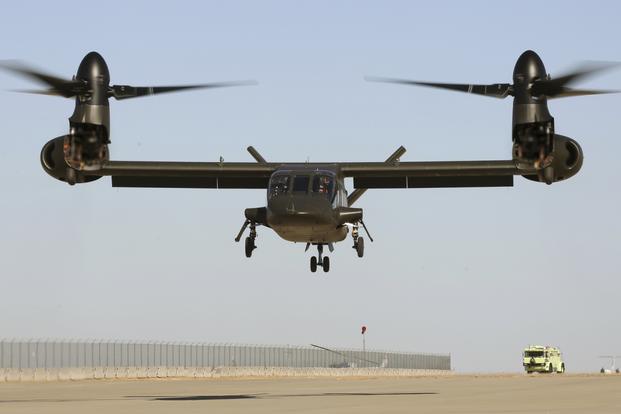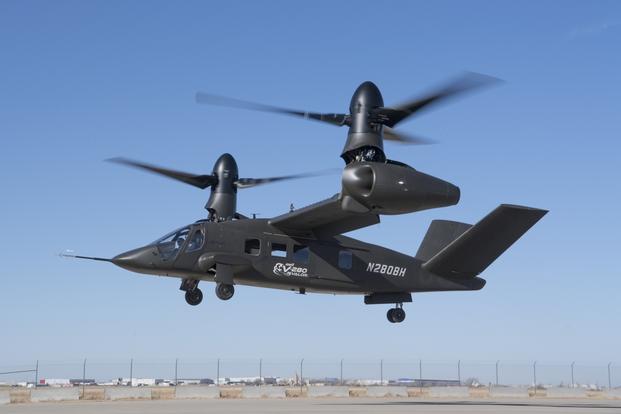Bell Helicopter's next-generation tilt-rotor aircraft, the V-280 Valor, has made its first flight, the company announced in a release Monday.
The black prototype, which resembles the older V-22 Osprey, also made by Textron Inc.'s Bell unit and Boeing Co., completed the maiden flight around 2 p.m. local time at the company's Amarillo, Texas, facility, according to the company.
"This is an exciting time for Bell Helicopter, and I could not be more proud of the progress we have made with first flight of the Bell V-280," Mitch Snyder, president and chief executive officer of Bell Helicopter, said in a statement.
"First flight demonstrates our commitment to supporting Department of Defense leadership's modernization priorities and acquisition reform initiatives," he added. "The Valor is designed to revolutionize vertical lift for the U.S. Army and represents a transformational aircraft for all the challenging missions our armed forces are asked to undertake."
Bell's V-280 Valor is slightly bigger than a UH-60 Black Hawk and hold a crew of four and carry up to 14 passengers. By comparison, the Black Hawk can hold a crew of four and transport 11 troops fully loaded or 20 lightly equipped.
The Valor is competing against SB-1 Defiant, a more conventional helicopter with a pusher-prop for added speed designed by Lockheed Martin Corp.'s Sikorsky unit and Boeing, for the Army's Joint Multi-Role Technology Demonstrator program.
Related content:
- AUSA 2016 Video: V-280 Valor
- Bell Touts New Tilt-Rotor High-Speed Helicopter
- Bell Tilt-Rotor Makes First Ground Test in Bid for Army Contract
The demonstrator effort is designed to hone requirements for a Future Vertical Lift acquisition program to fill the Army's requirement for a mid-sized, next-generation rotorcraft with twice the speed and range of a conventional helicopter to replace its UH-60 Black Hawks probably in the 2030s.
Bell wants to sell the V-280 to all the services, but the Army -- with its thousands of Black Hawks alone -- offers the biggest potential market. To land the deal, the firm will have to overcome the service's traditional opposition to tilt-rotor aircraft, which take off and land like a helicopter but fly like a conventional propeller-driven aircraft.
The SB-1 Defiant, meanwhile, is expected to make its first flight in the first half of next year. Lockheed's Sikorsky earlier this year released footage showing a smaller coaxial design, the S-97 Raider, undergoing flight testing.
The Raider was initially designed for a $16 billion U.S. Army weapons acquisition program called the Armed Aerial Scout to replace the OH-58 Kiowa Warrior, one of the smallest helicopters in the fleet, which was retired from Army service this year.
While the Army put that acquisition effort on hold due to budget limitations, Sikorsky, maker of the Black Hawk helicopter and other aircraft, still plans to sell the coaxial design in the U.S. and abroad, and the firm along with its suppliers have spent tens of millions of dollars developing the technology.
-- Richard Sisk contributed to this report.
-- Brendan McGarry can be reached at brendan.mcgarry@military.com. Follow him on Twitter at @Brendan_McGarry.










